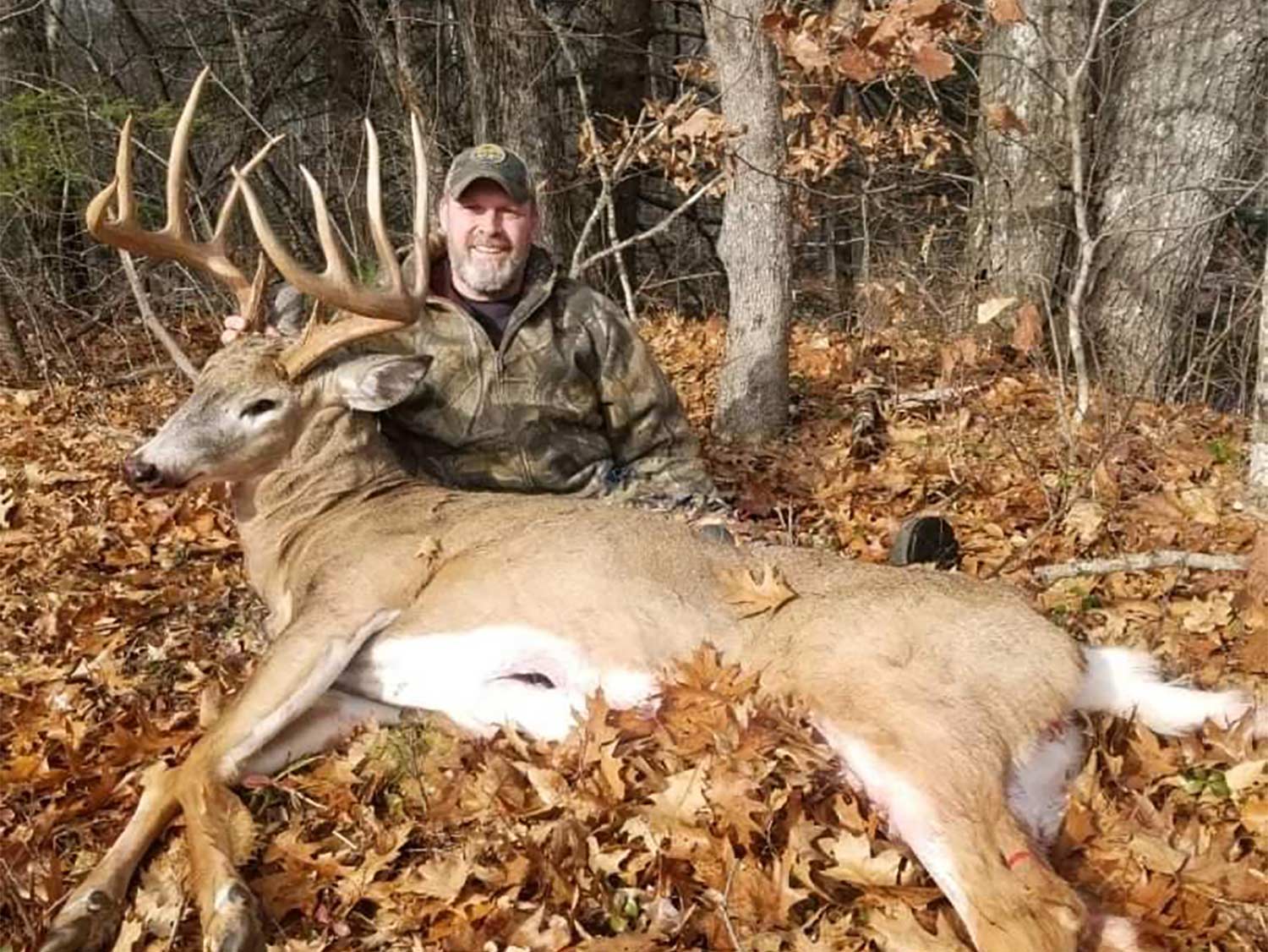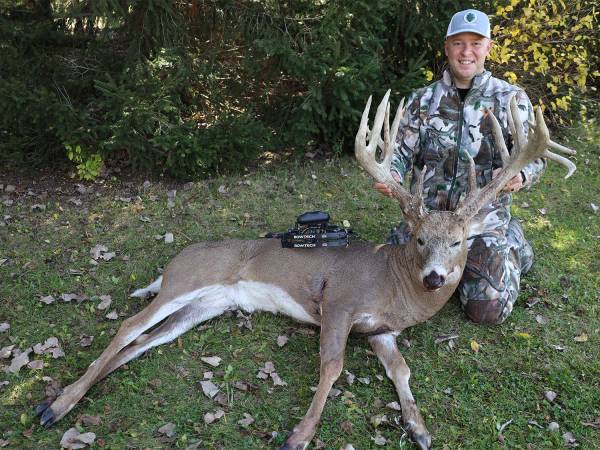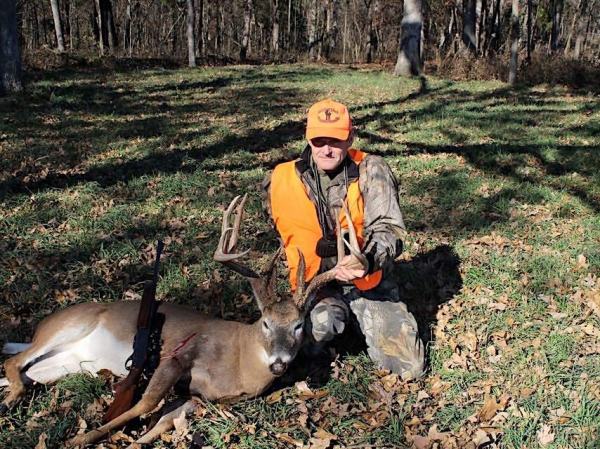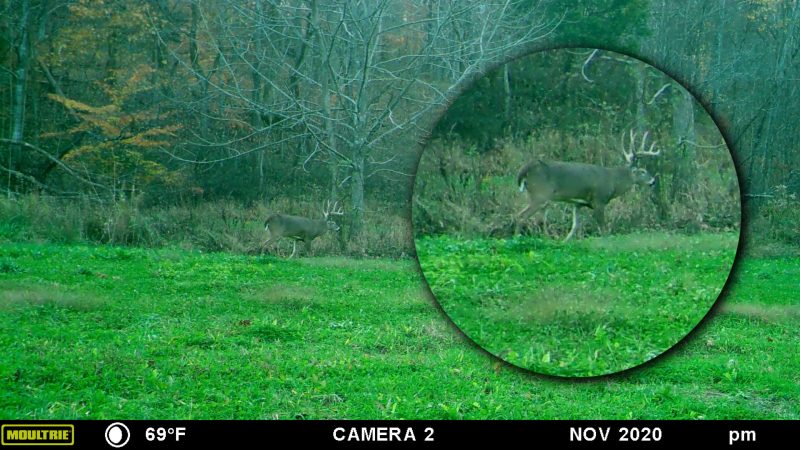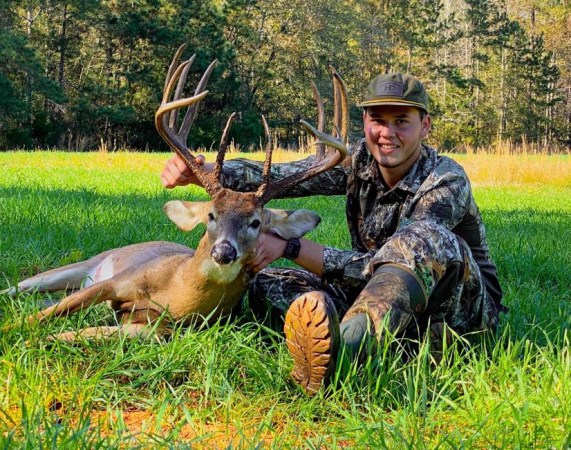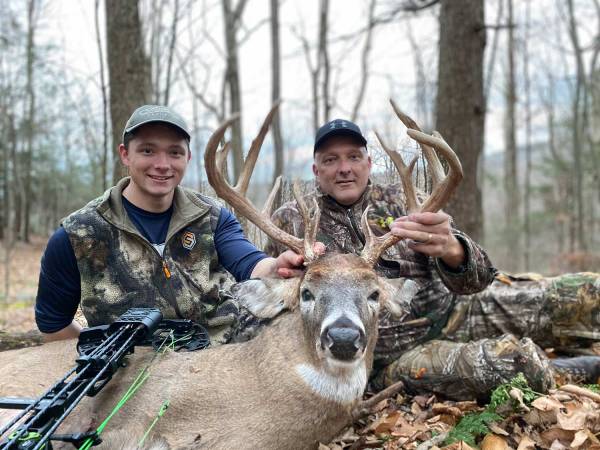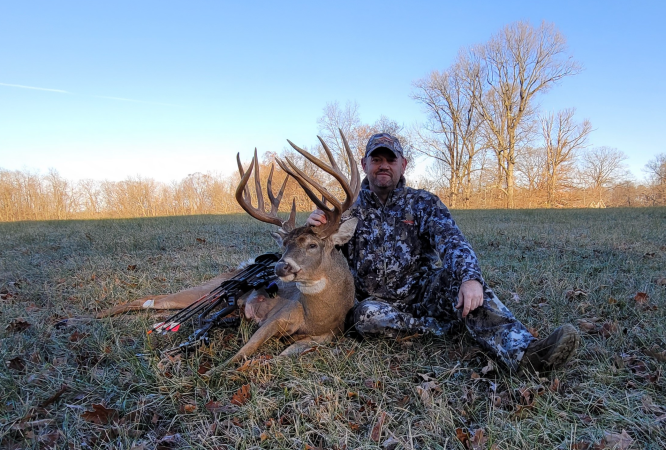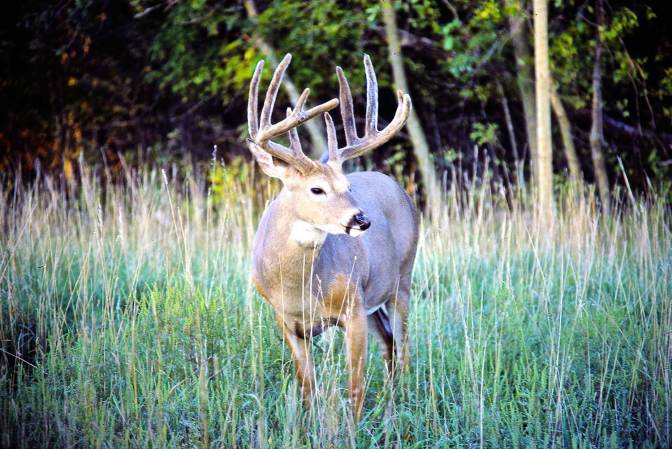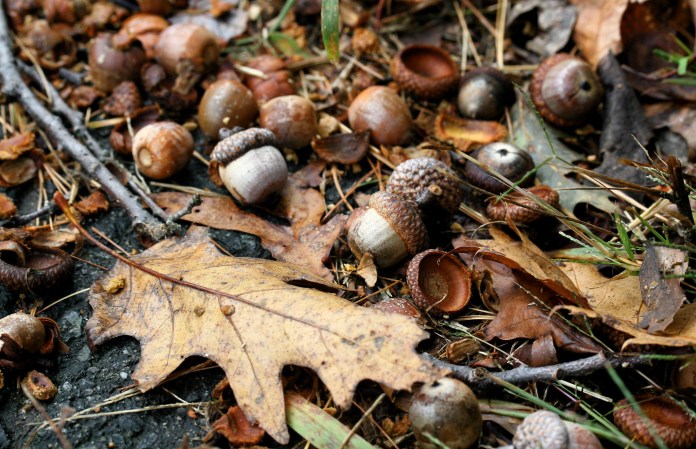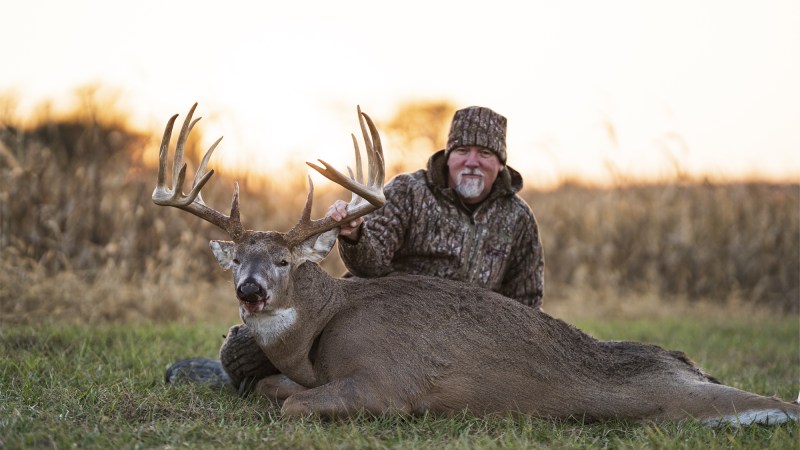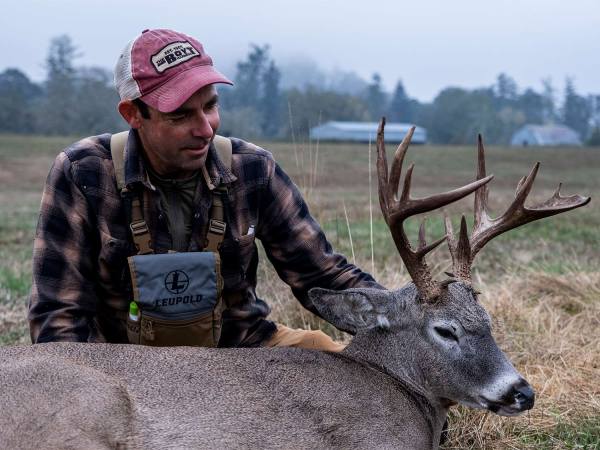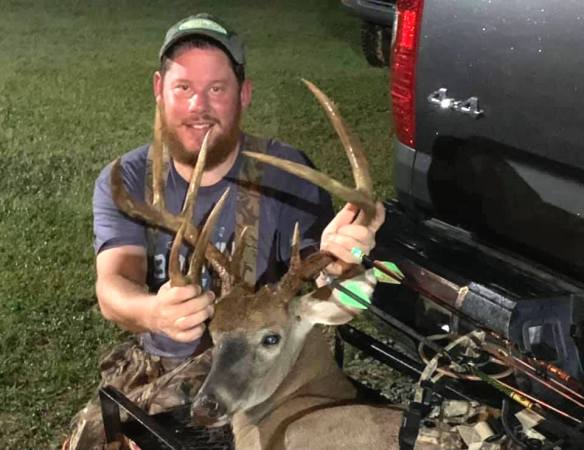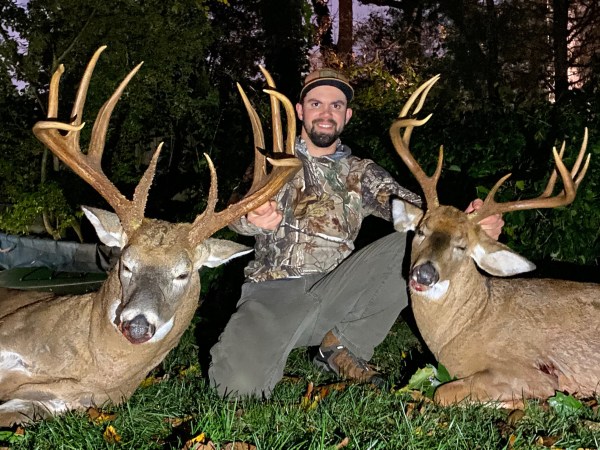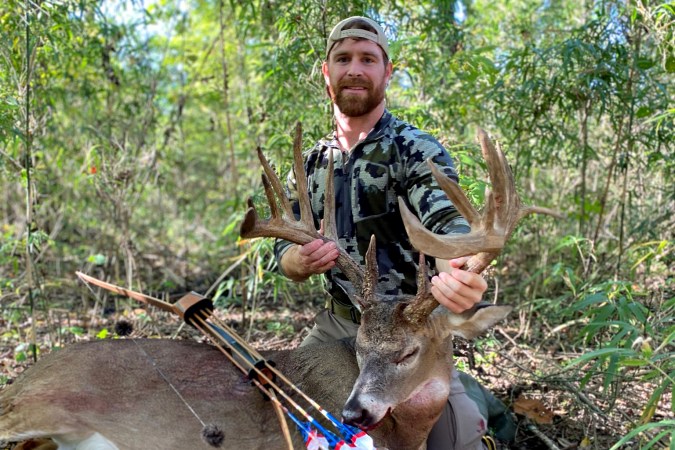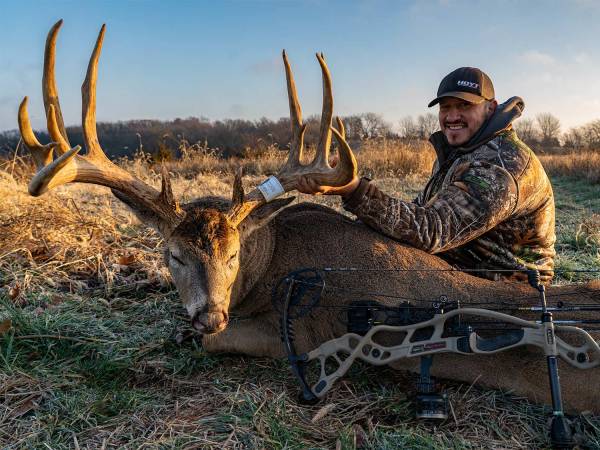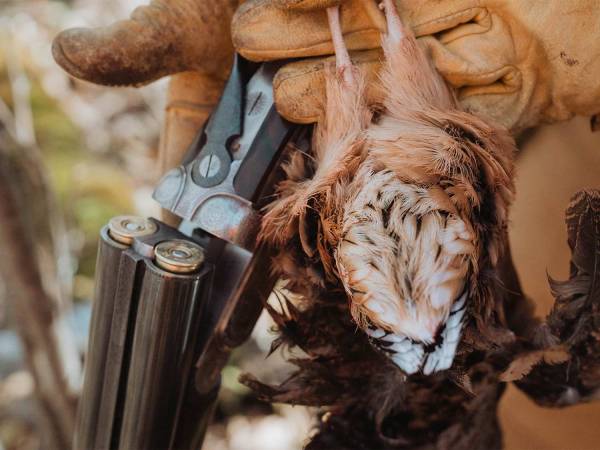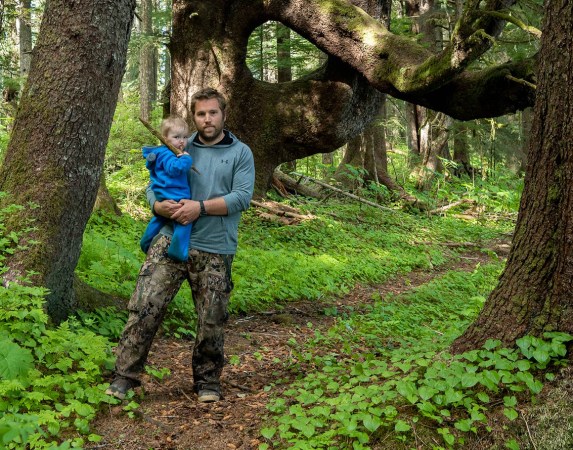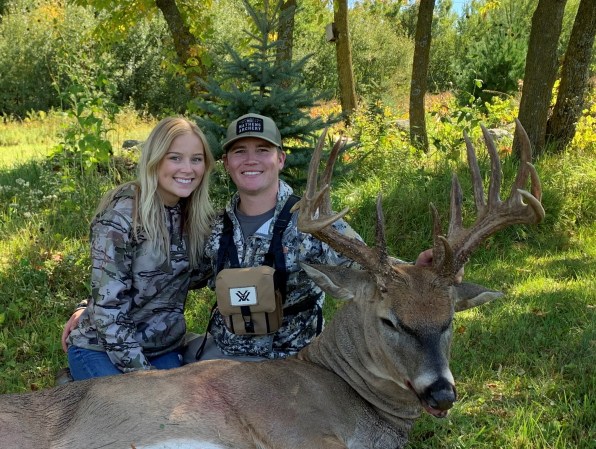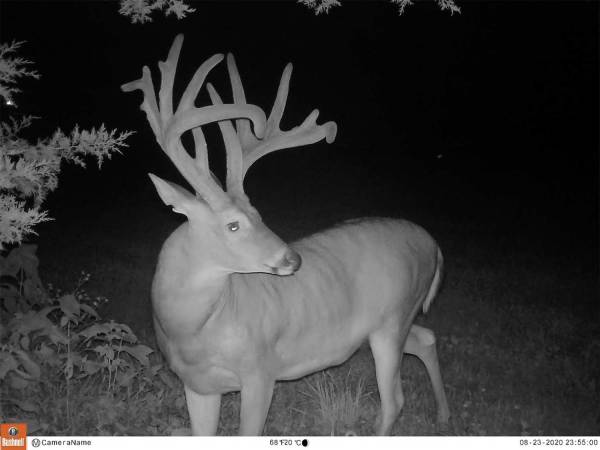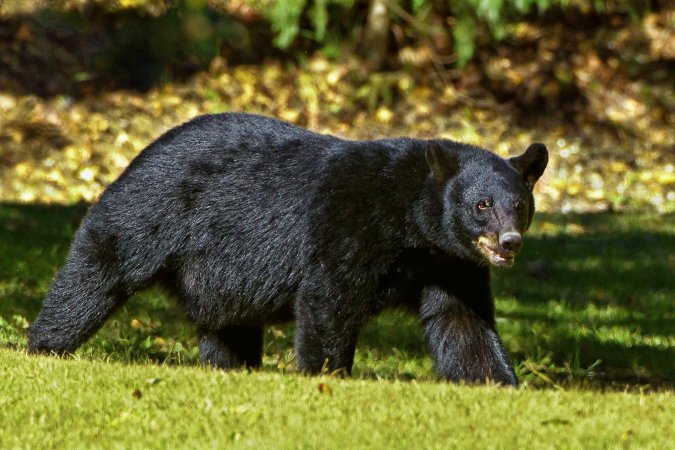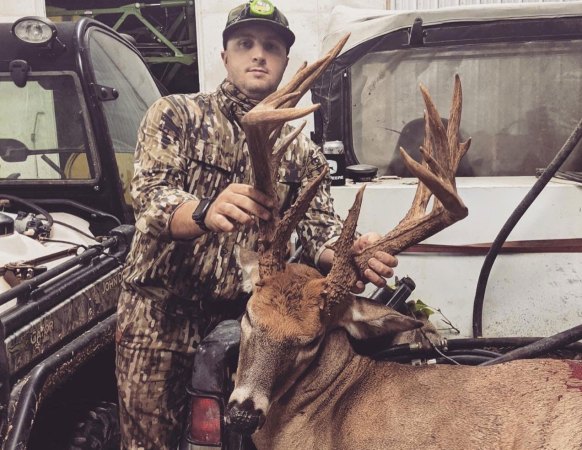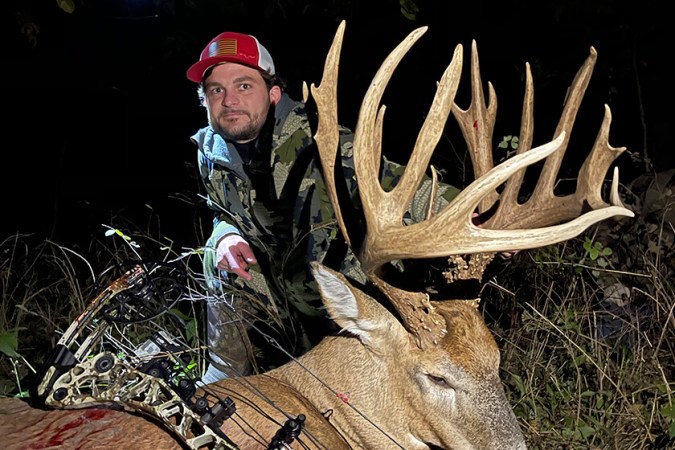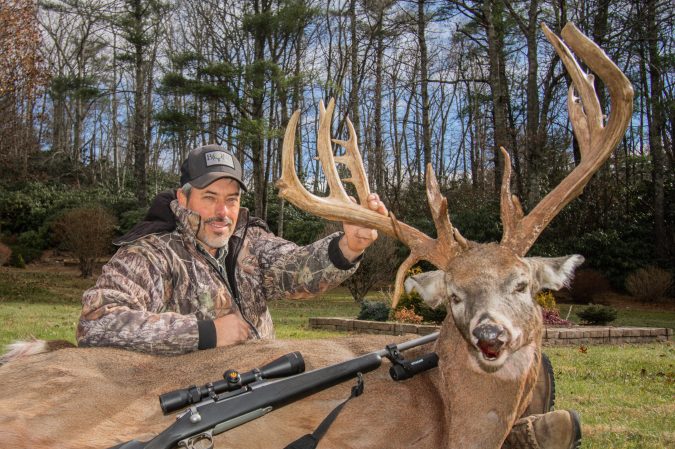Imagine hunting in a place where a 180 deer is considered a decent buck, but not particularly noteworthy; where 200 is a realistic goal, achieved by several hunters every season, in a place where there are no high fences or ear tags. While the rest of the whitetail world measures bucks in inches, hunters from the Northeast prefer pounds. “You can’t eat antlers,” they say in a thick Downeast accent. The first question asked of anyone said to have killed a big one is, “What’d he weigh?” While they may not garner as much attention outside of the Northeast, heavyweight bucks here are the equivalent of a Boone & Crockett buck. As with big-racked whitetails, these scale-tippers are rare, and their relative value increases with size. What follows are some of the most impressive examples of big-bodied deer.
1. The Moore Buck
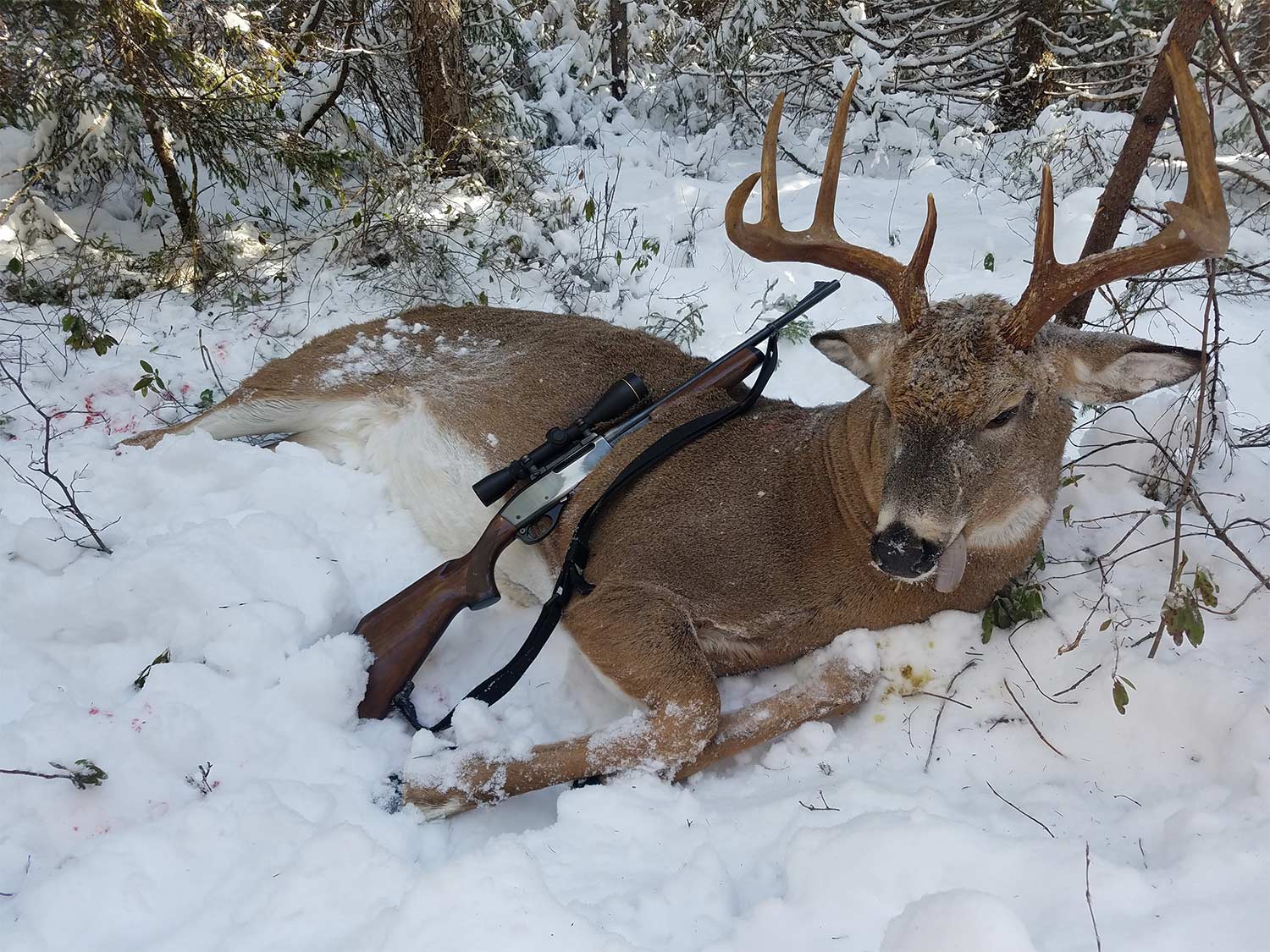
Nationwide, there is an elite informal group called the 200 Club. Admission requires that you harvest a deer scoring at least 200 inches. The Biggest Bucks in Maine Club also has a 200 minimum, measured in pounds. Now run by The Maine Sportsman magazine, the BBMC awards a patch and certificate to hunters who register their bucks, which must be weighed on a certified scale, with all internal organs removed. The Club receives between 400 and 500 entries each year, and it’s widely acknowledged there are probably at least as many of these huge deer taken each year that never get entered. Most weigh in the low to mid 200s, but every so often one is felled that far exceeds the minimum.
Most of Maine’s biggest bucks come from the more remote regions where light hunting pressure allows them to live long enough to realize their full potential for body growth. It was in just such an area that Brendan Moore and his hunting partner Chris Griggs began their 2018 hunt in typical Northwoods fashion, driving the logging roads in search of a large track in the snow.
The first couple days produced several tracks and a few deer sightings, though not of the caliber they sought. On Day 3 they found a fresher, larger track and formulated a plan with Moore taking up the trail and Griggs circling around to where they thought the buck might be headed, based on the previous two days of hunting the area.
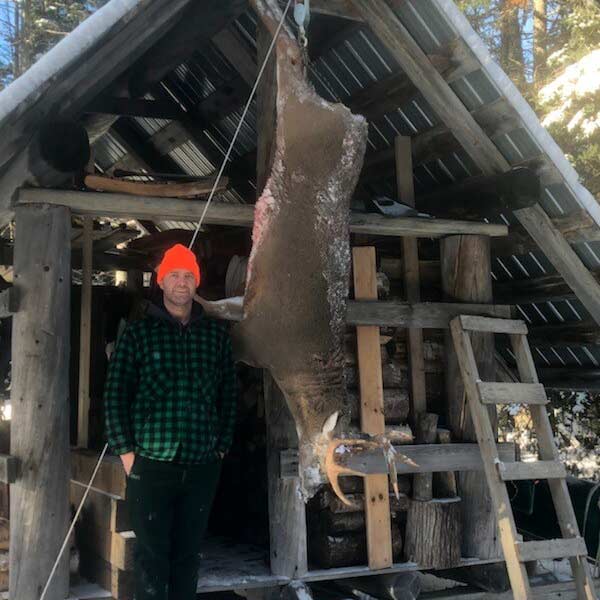
The track Moore followed through fresh powder led him through open cuttings and old choppings, up skid trails and down winter roads, over hardwood ridges and down into cedar swamps, only to find himself back where he began. Nonetheless he continued on and soon found a running track indicating he had jumped the deer.
Read Next: The Biggest Buck of the Season?
More straight-line tracking eventually brought Moore into a spruce thicket alongside a river where the buck’s trail began to meander. An experienced tracker, Moore recognized this as a sign the buck had slowed, and could even be bedded nearby. Then he saw it, just the top of the buck’s rack, not 30 yards distance. Wanting to be certain of his target, Moore risked moving closer, which allowed him a clear and lethal neck shot. That was at 11:15 a.m. Moore and Griggs didn’t make it back to camp with the buck until 9 p.m. and it would be four more days before they got to an official scale that weighed the buck at 300 pounds even.
2. The Godfrey Buck
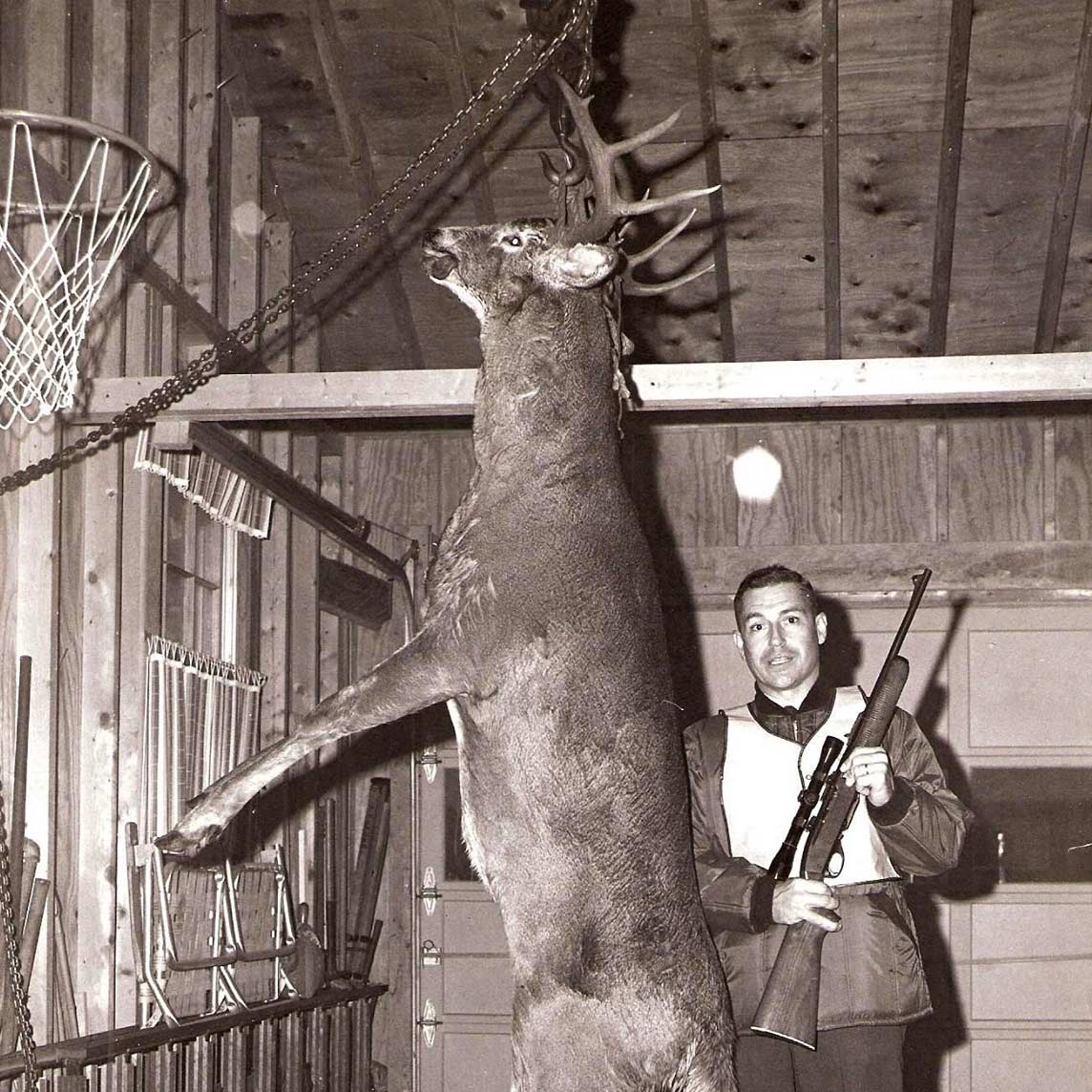
Albert Godfrey Sr. already had some experience tracking and killing big bucks before he set out on opening day, 1969. His first weighed 211 and his second, just over 200, was one of three bucks Godfrey happened upon at the height of the rut, all three of which were in the process of breeding does.
Godfrey had been invited to a friend’s camp near Eustis, Maine, that was well off the main road in an area gated off to the public. The morning passed without action. Soaked and discouraged by the heavy rains, Godfrey was slogging up a haul road when he glanced to his right and saw a huge animal. It was so large his first thought was that it was a caribou that had wandered off from one of the state’s failed re-introduction programs, but a second look showed it didn’t have the right headgear.
Read Next: Minnesota Hunter Shoots a 10-Point Buck (Then a Gator) on the Whitetail Opener
The deer was standing in an elevated clump of cedars barely 30 yards away, so close that when he raised his Remington 742 and found the deer in his 4x scope all he saw was a sea of brown. Without a clear shot, Godfrey gambled and took a couple steps back. This prompted the buck to lean forward, perhaps for a better view of the strange intruder, exposing its shoulder to Godfrey who wasted no time in shooting. He lost sight of the buck momentarily in a cloud of steam created by the muzzle blast and his rain-soaked barrel but he quickly ran over and found the deer lying still in a hole behind the cedars. Godfrey later discovered his bullet had hit a rib and split it in half, one half hitting the heart and the other traveling up the spine to the base of the buck’s skull.
When his companion showed up later, the two hunters were able to drag the buck to the road, but couldn’t heft it up onto the trunk of their ’69 Plymouth Fury until another hunter happened by and offered to assist. They knew the buck was big but didn’t realize how big until they got to town later that afternoon where it weighed in at 307.
3. The Hinckley Buck
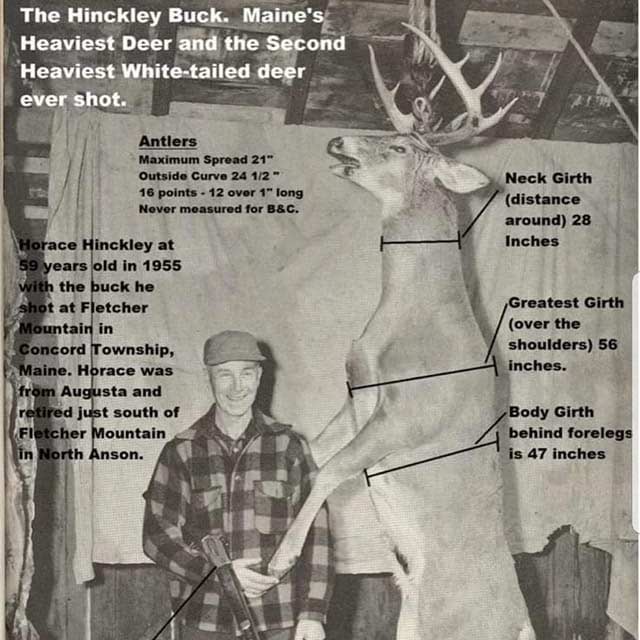
The biggest Maine buck on record is the legendary Hinckley buck, taken in 1955. Irrespective of the weight it’s a remarkable story. Horace Hinckley and his family headed northwest, not quite to the vast undeveloped woodlands that make up most of the northern half of Maine, but to their doorstep. Horace and his wife, Olive chose to begin their hunt on an old tote road while their son, Philip chose to hunt another location with his wife.
After an hour of hunting with little fresh sign the elder Hinckleys came across the foreman of a local logging operation who offered them a ride to an area with more fresh sign. The couple made their way up a valley until they each found a location to set up, out of sight but within earshot of one another. They wouldn’t have to wait long for the action.
Less than 30 minutes after setting up in this new location, Horace spun when he heard a twig snap, spied a big buck and fired, but missed. No one will ever know if it was the same deer, but five minutes later his wife fired and connected with a buck that would eventually pull the scale down past the magical 200 pounds. Olive excitedly yelled for Horace to come see her buck. He never said whether it was a premonition, stubbornness or perhaps a tinge of jealousy but he inexplicably sat tight. Moments later Horace saw yet another buck sneaking his way and this time his .30/06 hit its mark. But the Hinckleys were not done.
While approaching the kill site to help drag the two monster bucks out, Hinckley’s brother, Ralph jumped and shot a six-point buck. Elsewhere, Philip’s wife had shot a spikehorn and while they were dragging it out another 200 pounder materialized and Philip added a fifth buck to the Hinckley game pole. It was three days before they could find a scale big enough to weigh the bucks. Two of the others were impressive but Horace’s ultimately pulled that scale down to 355 pounds, meaning it had an estimated live weight of between 450 and 500 pounds.
Read Next: Here’s What You Need to Know About Hunting Bullets and Terminal Performance
4. The Evans Buck
New Hampshire shares a 160-mile border with Maine abut since deer don’t recognize state lines, it’s not surprising a few bruisers fall on the western side as well. And with better habitat and slightly milder winter conditions, they sometimes fare better than the big-bodied northern Maine bucks, allowing them to divert more resources to their headgear as well as their bodies.
Mark Evans has reached that point as a hunter where he values the experience and comradery as much as any animal taken. He has spent the last few years hunting Vermont’s late primitive arms season with friends and family and when a fellow in camp mentioned he owned a camp close to Evans’ New Hampshire home, the pair agreed they should plan something there as well.
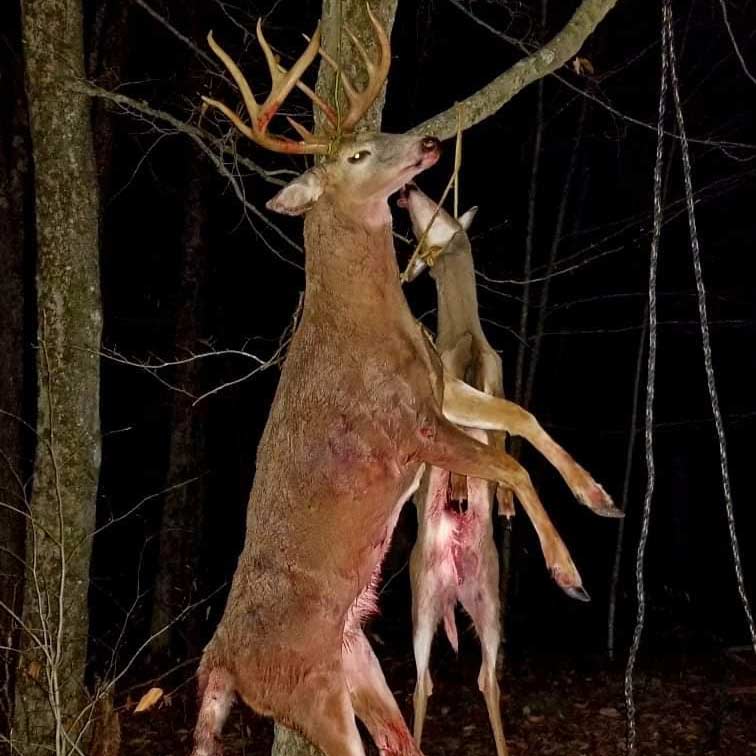
Several years passed before they finally made it happen, opting for the 2020 opener to New Hampshire’s muzzleloader season. As it was a new area for him, Evans chose to concentrate on learning the land while he hunted several areas suggested by his hunting companions. The morning hunt was slow and the group met back at camp at midday to make plans. Still unfamiliar with the area Evans had picked up on something he’d heard the others mention several times: the old farmer’s field. The camp owner thought that would be a good spot and one of the others offered to take Evans up that way as he had a stand in the area.
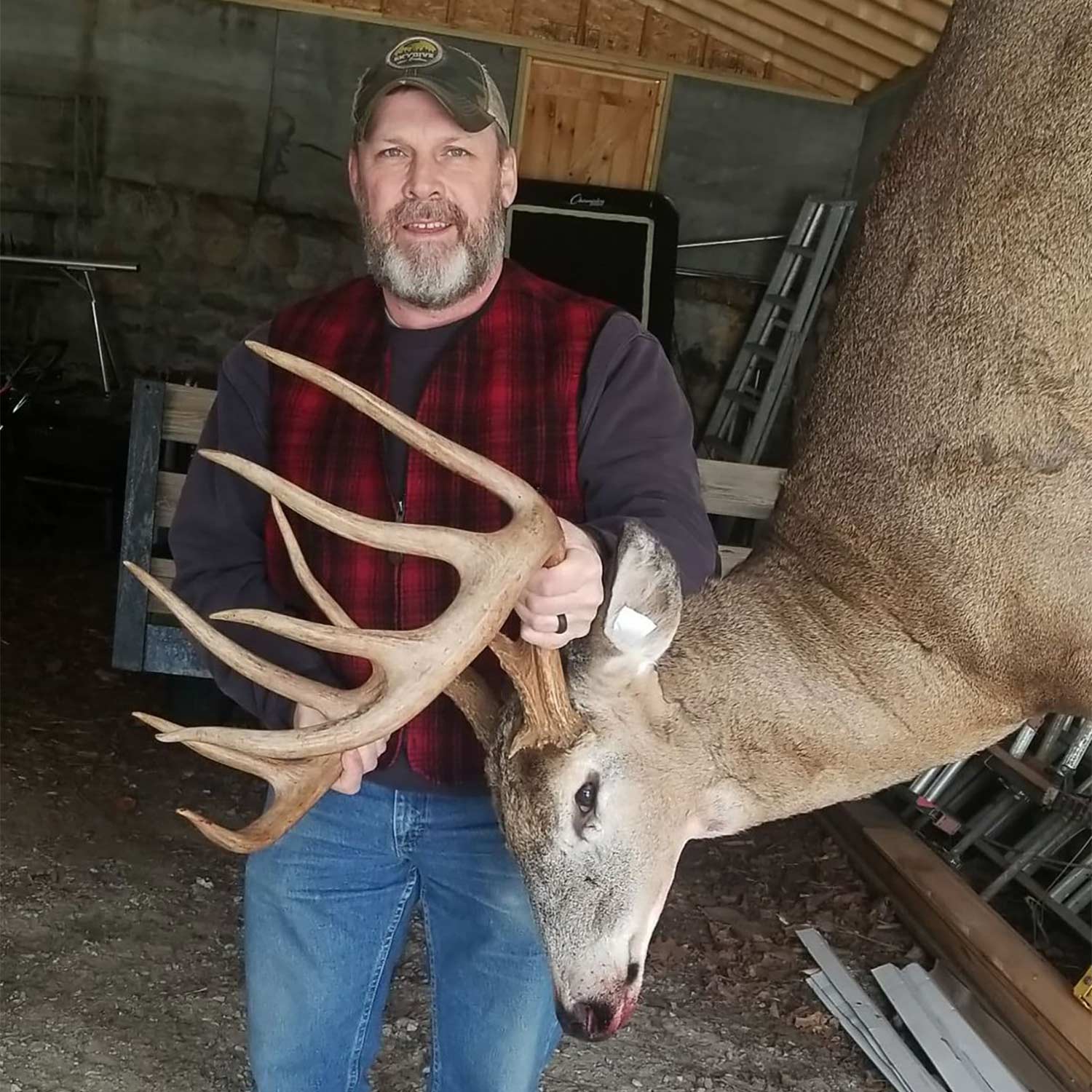
After finding the long abandoned and overgrown field, Evans scouted around the edges for sign while dragging a scent rag, eventually ending up among the branches of a fallen ash tree, which he used as a ground blind. Evans was reveling in the beauty of the area, the scenery and the remote camp experience between his bouts of estrous bleats and tending grunts when he heard a real grunt directly behind him. Easing around he spied a massive buck standing in the field. Several long seconds passed when he was finally able to get into shooting position and fire before the buck disappeared in a cloud of smoke.
The doubt every hunter experiences after a shot took over but Evans needn’t have worried. He found the buck a short distance into the woods and was struck by its size. An experienced woodsman with many big bucks in his past he frankly admitted it was the most excited he’s ever been. “I couldn’t form complete sentences for a day,” he said. And this one was a double whammy. Not only did it weigh in at 270 pounds, it sported a massive record book rack.
5. The Verge Buck
Vermont doesn’t have quite the same reputation for producing big bucks as New Hampshire and Maine. In the not-so-distant past it was considered more on a par with Pennsylvania for its high proportion of yearling bucks killed and relatively small body weights. That’s changing with the implementation of antler restrictions, but wasn’t always the case.
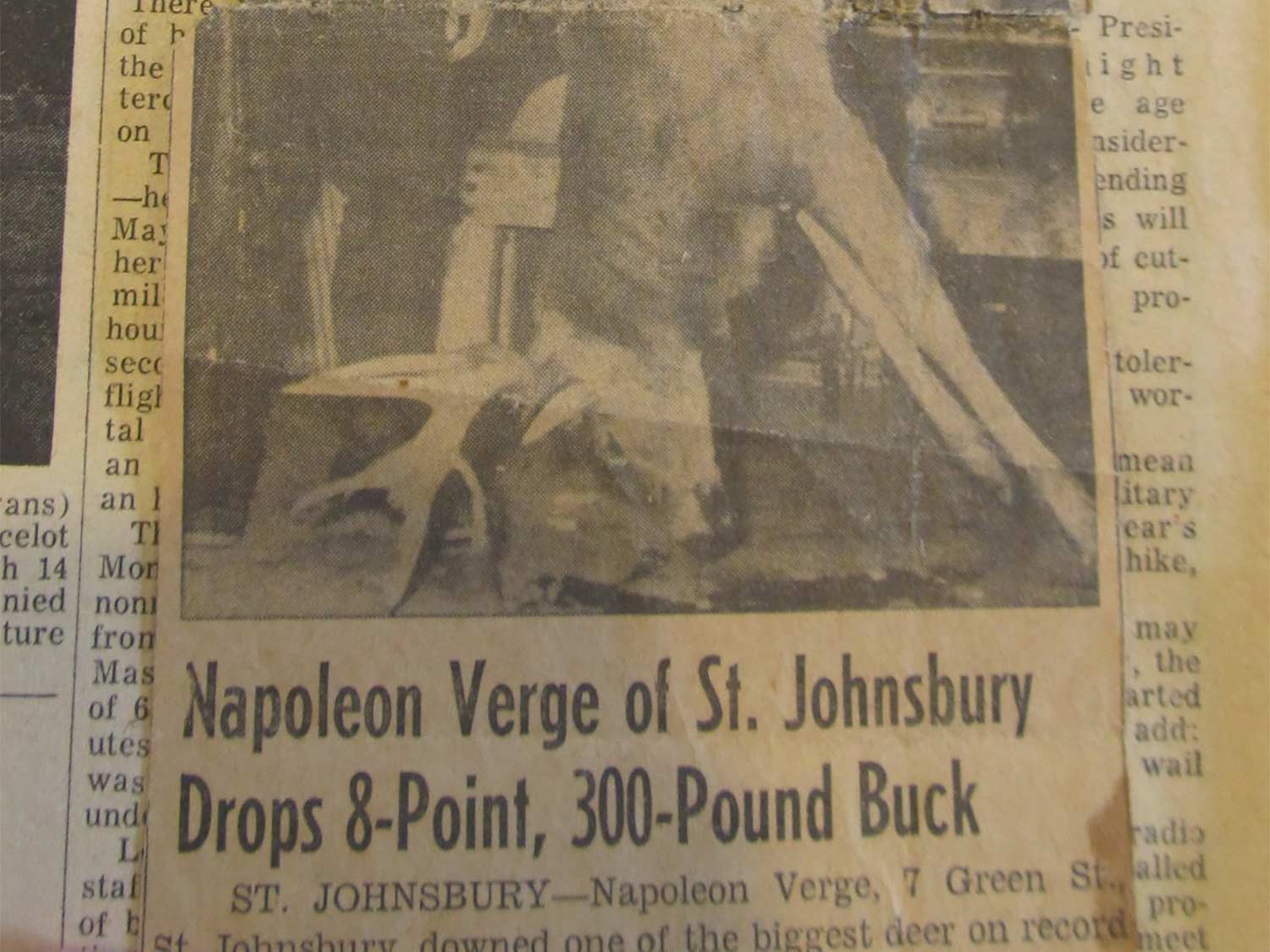
The 1950s were shining times for New England deer hunters. Just three years after Horace Hinckley felled Maine’s biggest, Napoleon Verge killed Vermont’s. Unlike the dense cedar swamps and softwood ridges of northern Maine, northern Vermont is characterized by steep terrain and mostly mixed and open hardwood forest. And while the classic scenario involves cutting a giant track in fresh snow and following it to its logical conclusion, that isn’t always the case.
After a fruitless day of hunting the crunchy beech ridges in warm temperatures and swirling winds, Verge opted to try a different spot across the road with more mixed cover the following day. The morning produced a few doe sightings and a passed opportunity at a small, broken-horn buck. With little more activity through midday Verge decided to sit out the final hours of daylight alongside an old hayfield with some wild apple trees.
That magical twilight time had just arrived when a doe wandered into the field. Knowing the rut should be on, Verge’s anticipation grew for what might be following her. When a six point popped out, Verge made his decision, slipped the safety off his largely hand-made .243 and was about to pulled the trigger when the buck bolted. He was still trying to sort out why when the answer came trotting out of the forest. The scenario couldn’t have been better. With his gun already up and ready, Verge merely had to lower his head onto the stock, acquire the target and fire. The buck folded on the spot.
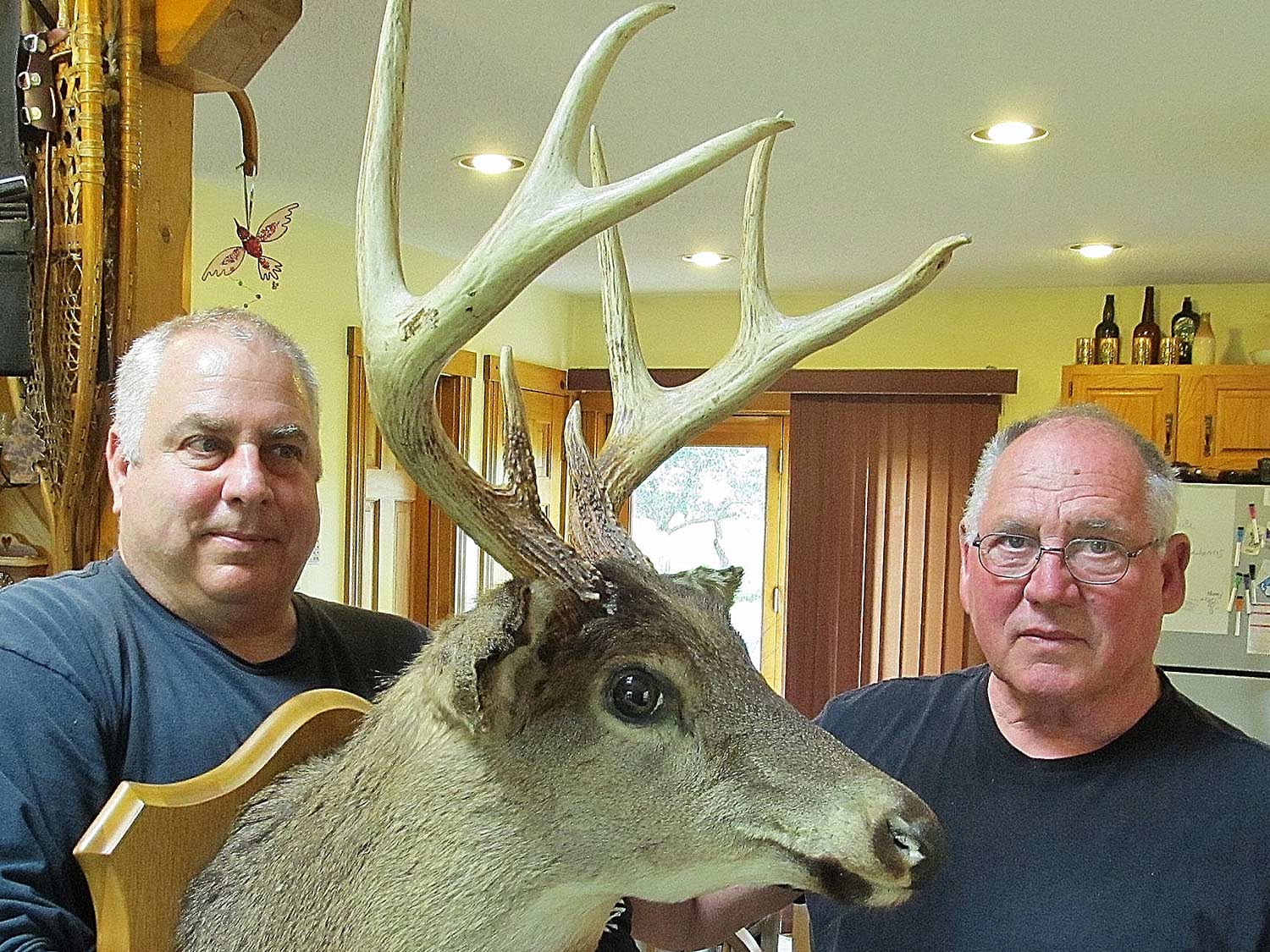
Verge had been hunting with his son, Ed, who heard the shot but chose to stay put until dark, hoping he too might fill his tag. They met up later at the truck and after more than an hour of dragging knew they had something special, but didn’t really understand how special. It was not until the following afternoon when they finally found a certified scale that the gravity of Verge’s accomplishment was realized. The weight slip, signed by the store owner and co-signed by the local warden read 300 pounds.
After a quarter century of hunting down stories of New England’s biggest bucks I’ve learned a couple valuable lessons. One is if you want to increase your odds of killing one you have to hunt where they live, which is most often the more remote, inaccessible areas of the north woods, where hunting pressure is light and deer can grow old and big. Another is that, though it’s rarer, they can show up almost anywhere and at any time. So even if you never make it to the vast northern wilderness, there’s always hope a true giant will one day step into your shooting lane.
Note: Special thanks to the Biggest Bucks in Maine Club, Northeast Big Bucks Club, New Hampshire Antler & Skull Trophy Club, Vermont Biggest Bucks Club, Albert Godfrey Sr. and Dave Evans for some of the images and information contained herein.
